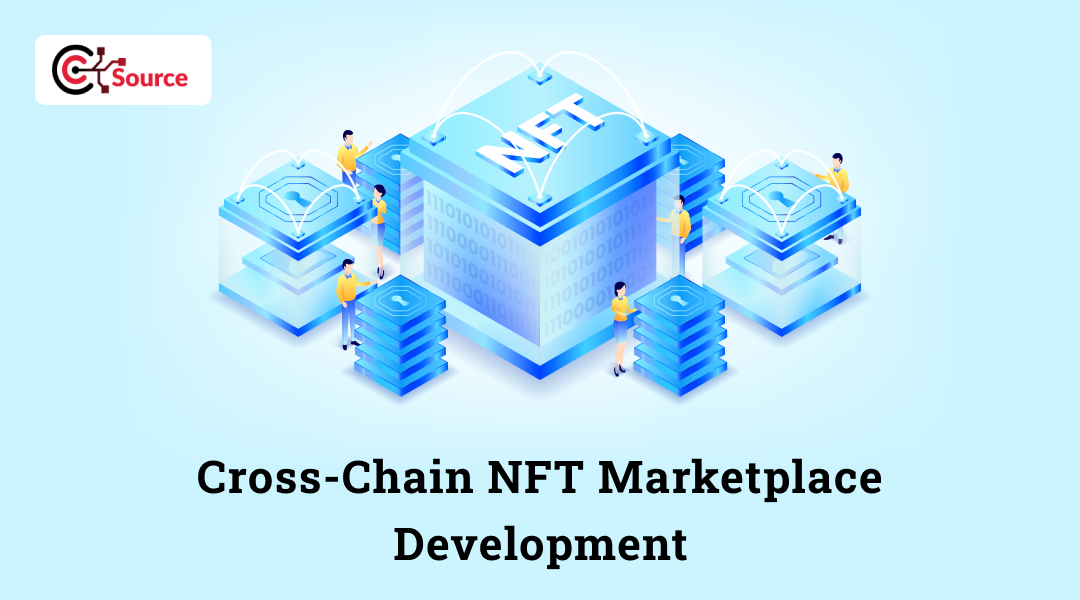The virtual NFT world is burgeoning tremendously despite the fact that overall it is not an encouraging global situation in the real world. Non-fungible tokens, which are commonly known as NFTs, are gathering an enormous amount of cryptocurrency for both creators and developers equally. NFT marketplace development is the one that caters to crypto entrepreneurs to earn a lot of money by selling their NFTs. It is not possible to degrade the potential of the NFT marketplace in the scenario of the NFT boom, and many players could claim credit for their services. These NFT marketplaces act as a bridge between cryptocurrency holders and creators who entered the NFT world, as it would have been impossible to get such huge amounts for artworks.
As there are multiple popular blockchains, in which the NFT marketplace works only on a single blockchain would not be sufficient as the NFT community is widespread across blockchain networks. Hence, every potential NFT investor has to decide on extending their portal to different blockchains as sellers and buyers are available in various blockchain spaces. This blog of ChainTechSource will give you some valuable information regarding NFT marketplaces and how cross-chain NFT marketplace can be a worthwhile expense for your business.
What is an NFT Marketplace?
A non-fungible token asset (NFT) marketplace is a blockchain-based platform that permits the trade of a variety of non-fungible token assets. Physical/digital art, music, video clips, avatars, in-game objects, digital trading cards, accessories, wearables, and even real-world items are all examples of NFT assets. These marketplace portals typically support cryptocurrency transactions, while some do allow fiat gateways to expand their customer base. OpenSea, Rarible, SuperRare, and Solsea are all popular generic NFT marketplaces. There are also some special marketplaces, such as the Decentraland, Axie Infinity, and Sandbox in-game marketplaces. While some of these marketplaces operate on a single blockchain, others operate on two. Yet, no single marketplace has supported all of the well-known blockchains.
Why Choose Cross-chain NFT Marketplace?
- Enabling your marketplace platform to work across various blockchains assures interoperability, allowing you to expand your user base regardless of their blockchain preference.
- Cross-chain capabilities make the NFT assets you publish on the portal more tamper-proof, ensuring trading legitimacy and establishing trust in your users.
- Working on many blockchains simplifies the process of obtaining liquidity because someone will be active on any of the blockchain networks at any one time.
- Despite the fact that running your platform on cross-chain makes you think security concerns are a risk, they are not. This is because the marketplace keeps track of every trade made through the NFT marketplace interface.
- Because of the benefits of operating across blockchains, your NFT marketplace can run smoothly on any device without lag.
Features of a Cross-chain NFT Marketplace
- Storefront
A cross-chain NFT marketplace’s storefront resembles any other e-commerce website, with products organized under categories like Trending, Featured, Coming Soon, Best-selling, and more. Individual NFT objects can also be viewed in detail, with some even including more information on the blockchain and protocols to help users verify their authenticity.
- Search bar
Every marketplace portal should include a search bar that allows customers to quickly locate the product they want to purchase. They should also incorporate several filtering options to make it easy to navigate the platform.
- Crypto wallet
A wallet is required for transactions on a marketplace that deals with NFTs on both ends. Some portals allow third-party crypto wallets like Metamask or Coinbase to be integrated. Others have wallets built into their portals where customers can load cryptocurrencies in order to trade.
- Notifications
It’s critical for a cross-chain NFT marketplace gateway to keep users informed about the latest offers, future drops, bids on their NFTs, and more via email and push alerts.
- Customer support
When a user has an issue in the marketplace, they will need a help portal. One of the most important characteristics of a cross-chain NFT marketplace should be a dedicated customer service team that works around the clock.
Steps Required for Developing a Cross-chain NFT Marketplace
- Plan extensively
It is critical to plan everything before beginning development. Initial planning entails determining your new business’s specialization.
- Designing market place
It is more crucial than anything else to plan your design, especially when working across blockchains.
- Development part
Development is crucial for a cross-chain NFT marketplace. Front-end development is critical to ensuring that your cross-chain NFT marketplace platform runs smoothly.
- Testing and launching
Software development requires extensive testing. Bugs, mistakes, and other faults can wreak havoc on the smooth operation of a cross-chain NFT marketplace.
- Release portal updates
As the user base grows and new issues occur, frequent upgrades are required to maintain the company secure and relevant.
Conclusion
Blockchain technology is interesting because it is gaining new applications every day, and cross-chain NFT marketplaces are one of them.

